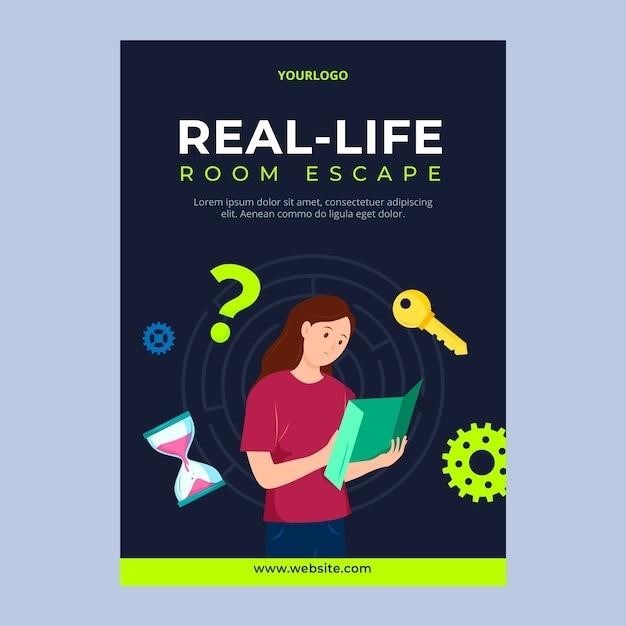Dave Ramsey’s 7 Baby Steps⁚ A Comprehensive Guide to Financial Freedom
Dave Ramsey’s 7 Baby Steps is a proven plan to achieve financial freedom. This plan is designed to help people get out of debt, build wealth, and live a life of financial peace. Dave Ramsey’s 7 Baby Steps are⁚ 1. Save $1,000 for Your Starter Emergency Fund, 2. Pay Off All Debt (Except the House) Using the Debt Snowball, 3. Save 3-6 Months of Expenses in a Fully Funded Emergency Fund, 4. Invest 15% of Your Household Income in Retirement, 5. Save for Your Children’s College Fund, 6. Pay Off Your Home Early, 7. Build Wealth and Give.
Introduction⁚ The Power of the 7 Baby Steps
Dave Ramsey’s 7 Baby Steps are a roadmap to financial freedom, a proven system that has helped millions of people escape the shackles of debt and build a secure future. This plan is not a quick fix or a get-rich-quick scheme; it’s a step-by-step approach that emphasizes discipline, consistency, and a long-term perspective. The 7 Baby Steps are designed to be achievable, even for those who feel overwhelmed by their finances. The power lies in their simplicity, their focus on building a solid foundation, and their emphasis on changing behaviors that have led to financial instability.
The 7 Baby Steps provide a clear path to financial peace, a state where money is no longer a source of stress or anxiety. They empower individuals to take control of their finances, make informed decisions, and achieve their financial goals. Whether you’re struggling with debt, just starting out, or looking to build wealth, the 7 Baby Steps can serve as a guide to a brighter financial future.
Baby Step 1⁚ Save $1,000 for Your Starter Emergency Fund
The first step in Dave Ramsey’s 7 Baby Steps is to build a $1,000 emergency fund. This seemingly small amount is the foundation upon which your financial journey is built. It’s a safety net, a buffer against unexpected expenses that can quickly derail your progress. Think of it as a first aid kit for your finances, ready to handle minor emergencies without sending you into debt.
Imagine a flat tire, a sudden medical bill, or a job loss. Without an emergency fund, these events can quickly spiral into a cycle of debt. The $1,000 emergency fund provides a sense of security and peace of mind, knowing you have a resource to handle these life curveballs without adding to your existing debt burden. This first step is about building a habit of saving, taking control of your money, and laying the groundwork for a more stable financial future.
Baby Step 2⁚ Pay Off All Debt (Except the House) Using the Debt Snowball
Once you have your $1,000 emergency fund, Dave Ramsey’s second baby step focuses on tackling debt. The debt snowball method is a psychological approach designed to create momentum and keep you motivated. You list all your debts (excluding your mortgage) from smallest to largest, regardless of interest rate.
The idea is to create a sense of accomplishment by quickly eliminating small debts. You make minimum payments on all debts except the smallest one. You attack that smallest debt with everything you have, making extra payments to knock it out as quickly as possible. Once the smallest debt is gone, you take the payment you were making on that debt and add it to the payment on the next smallest debt. This snowball effect grows as you pay off each debt, building momentum and confidence. By focusing on the psychological impact of seeing debts disappear, the debt snowball method helps you stay motivated and achieve financial freedom sooner.
Baby Step 3⁚ Save 3-6 Months of Expenses in a Fully Funded Emergency Fund
After conquering your debt, Dave Ramsey’s third baby step encourages you to build a larger emergency fund, a safety net to protect you from unexpected life events. This fully funded emergency fund is designed to cover 3-6 months of your essential living expenses.
Think of it as a cushion against job loss, medical emergencies, car repairs, or other unexpected expenses. A fully funded emergency fund gives you financial security and peace of mind. It prevents you from going back into debt when life throws curveballs. The goal is to build this fund while continuing to make minimum payments on your mortgage and contributing to your retirement savings. By building this financial safety net, you’ll be better prepared for life’s uncertainties and can confidently navigate unexpected situations without falling back into debt.
Baby Step 4⁚ Invest 15% of Your Household Income in Retirement
Dave Ramsey’s fourth baby step marks a significant shift in your financial journey⁚ investing for your future. This step encourages you to invest 15% of your household income into retirement accounts. This may seem daunting at first, but it’s a crucial step towards a secure and comfortable retirement.
The goal of this step is to start building wealth for your future. By investing regularly, you can take advantage of compound interest, allowing your money to grow exponentially over time. This step encourages you to prioritize retirement savings, ensuring you have a nest egg to rely on when you’re ready to retire. Dave Ramsey recommends investing in Roth IRAs and pre-tax retirement plans, maximizing your investment potential while minimizing your tax burden.
While you may be tempted to invest in other areas, Dave Ramsey emphasizes the importance of prioritizing your retirement savings. By establishing this habit early, you’ll be setting yourself up for a financially secure future and enjoying the peace of mind that comes with knowing you’ve made a wise decision for your long-term financial well-being.
Baby Step 5⁚ Save for Your Children’s College Fund
Dave Ramsey’s fifth baby step focuses on securing your children’s future by establishing a college savings fund. While this step is optional, it underscores the importance of planning for your children’s education.
Dave Ramsey encourages parents to consider 529 college savings plans or Education Savings Accounts (ESAs) as effective tools for saving for college. These plans offer tax advantages, making them a valuable option for families seeking to minimize the financial burden of higher education.
Saving for your children’s college fund is a long-term investment, requiring discipline and consistency. Start by setting a realistic savings goal and consistently contributing to the chosen plan. While you may have other financial priorities, Dave Ramsey emphasizes the importance of prioritizing your children’s education, ensuring they have access to opportunities for their future success.
By taking this step, you’re demonstrating the value of planning for the future and providing your children with a solid foundation for their education.
Baby Step 6⁚ Pay Off Your Home Early
Dave Ramsey’s sixth baby step marks a significant milestone in your journey to financial freedom⁚ paying off your mortgage early. It’s a pivotal step that signifies the elimination of a substantial financial burden and unlocks a sense of liberation from debt.

Dave Ramsey emphasizes that paying off your mortgage early is not just about getting rid of debt, it’s about achieving true financial independence. Imagine the freedom of owning your home outright, without monthly mortgage payments. This step allows you to redirect your financial resources towards other goals, like building wealth and enjoying life without the pressure of a mortgage.
Dave Ramsey recommends utilizing the “Debt Snowball” method for accelerating mortgage payments. This involves making extra payments on your mortgage, strategically reducing the principal balance and minimizing interest costs. Utilize resources like the Mortgage Payoff Calculator to estimate the potential savings from accelerating your mortgage payoff.
Paying off your mortgage early is a significant achievement and a testament to your commitment to financial discipline. It’s a step towards a brighter financial future, where you can live life on your own terms, free from the shackles of debt.
Baby Step 7⁚ Build Wealth and Give
Dave Ramsey’s seventh baby step is about embracing a life of abundance and generosity. After conquering debt and establishing a solid financial foundation, this step encourages you to build wealth and share your blessings with others. It’s a powerful reminder that financial freedom isn’t just about accumulating wealth, but also about using it to make a positive impact on the world.
Building wealth in this step involves strategically investing your money and watching it grow over time. Dave Ramsey recommends investing 15% of your household income into retirement accounts and other investment vehicles. The goal is to create a secure financial future and potentially leave a legacy for your loved ones.
The “give” aspect of this step emphasizes the importance of generosity. Dave Ramsey encourages using your newfound wealth to support causes you care about, whether it’s charitable giving, helping family members, or simply spreading joy and kindness. Giving not only brings fulfillment but also reinforces a sense of gratitude and abundance.
Baby Step 7 is about living a life of purpose, where financial freedom allows you to pursue passions, make a difference, and experience the true meaning of wealth⁚ not just material possessions but also the ability to give back and make a positive impact.

The Importance of a Budget
A budget is the cornerstone of Dave Ramsey’s 7 Baby Steps and a crucial tool for achieving financial peace. It acts as a roadmap, guiding your spending and saving habits towards your financial goals. Without a budget, it’s easy to lose track of your money, overspend, and fall into debt. A budget gives you control over your finances, allowing you to make conscious decisions about where your money goes.
Dave Ramsey emphasizes the importance of a zero-based budget. This means meticulously tracking every dollar of your income and allocating it to specific categories, such as housing, food, transportation, and entertainment. By assigning every dollar a purpose, you eliminate unnecessary spending and free up funds for your financial priorities, like paying off debt or building an emergency fund.
A budget isn’t just about restricting spending; it’s about empowering you to make informed choices about your money. It allows you to prioritize your needs over wants, track your progress towards financial goals, and make adjustments as needed. Whether you use a budgeting app, a spreadsheet, or a simple notebook, having a budget is essential for taking control of your finances and achieving the financial freedom Dave Ramsey advocates.
Dave Ramsey’s Resources and Tools
Dave Ramsey provides a wealth of resources and tools to support individuals on their journey to financial freedom. His website, ramseysolutions.com, offers a treasure trove of information, including articles, podcasts, and calculators.
One of the most popular resources is the Total Money Makeover, Dave Ramsey’s bestselling book that outlines his 7 Baby Steps in detail. This comprehensive guide provides practical advice, real-life examples, and actionable steps to help readers take control of their finances.
Dave Ramsey also offers a variety of budgeting tools, including the EveryDollar budgeting app, designed to help users track their spending and allocate their money according to their budget. Additionally, he provides calculators for debt snowball, mortgage payoff, and net worth, empowering individuals to make informed decisions and track their progress.
Furthermore, Dave Ramsey hosts a popular radio show, The Ramsey Show, which features advice on personal finance, debt management, and investing. His engaging style and relatable stories have helped millions of people achieve financial peace. Through his resources and tools, Dave Ramsey provides a supportive framework for navigating the complexities of personal finance and reaching financial goals.
Achieving Financial Peace with the 7 Baby Steps
Dave Ramsey’s 7 Baby Steps offer a roadmap to financial freedom, empowering individuals to take control of their money and achieve financial peace. By focusing on practical steps, such as building an emergency fund, eliminating debt, and investing for the future, the 7 Baby Steps provide a structured approach to managing finances.
The plan emphasizes the importance of a budget, encouraging individuals to track their spending, prioritize needs over wants, and make informed financial decisions. Through consistent effort and discipline, the 7 Baby Steps can help individuals break free from the shackles of debt, build a secure financial foundation, and achieve their financial goals.
Dave Ramsey’s emphasis on living within one’s means, prioritizing saving and investing, and avoiding unnecessary debt encourages a mindset of financial responsibility and long-term financial security; By following the 7 Baby Steps, individuals can gain confidence in their financial management, break free from financial stress, and create a brighter future for themselves and their families.




























